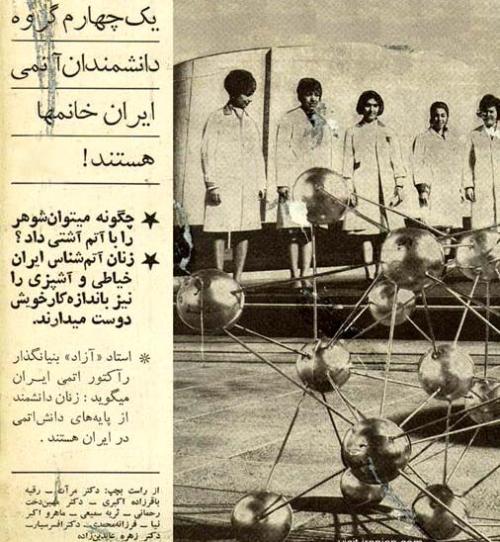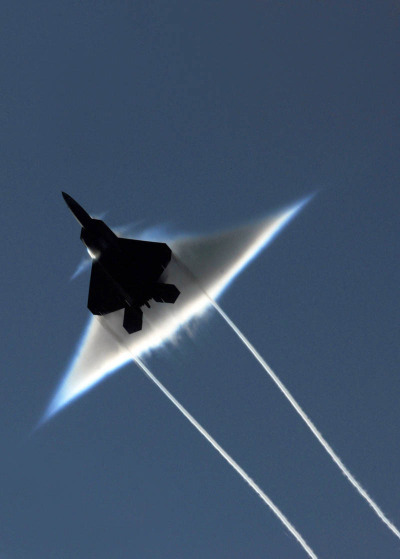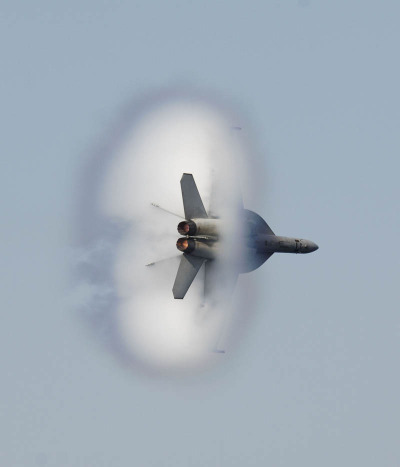Nikola Tesla Won 8 Nobel Prizes For His Work And Discoveries. No He Didn’t. These People Did Instead.

Nikola Tesla Won 8 Nobel Prizes For His Work And Discoveries. No He Didn’t. These People Did Instead.
Wilhelm Conrad Röntgen, Physics, 1901: Wilhelm Roentgan was awarded the first Nobel Prize in physics for his discovery of X-Rays on November 8, 1895. Not many know this but Tesla was working with X-Rays prior to Roentgen in 1892, but used the term “radiant matter” instead. He conducted numerous experiments and some of the first imaging, which he called “shadowgraphs,” using these unknown rays in his laboratory before its destruction by fire on March 13, 1895. Tesla was also the first to warn the scientific world on the harms of these rays if not used properly.
Marie Curie, Pierre Curie and Antoine Henri Becquerel, Physics/Chemistry, 1903/1911: The three shared the 1903 Nobel Prize in Physics for their discovery and work on radioactivity in 1898. Madame Curie won the 1911 Nobel Prize in Chemistry for her discovery of radium and polonium, also in 1898. Tesla discovered radioactivity in experiments with X-Rays in 1896, and published many articles on the subject in scientific periodicals prior to the three.
Joseph John Thomson, Physics, 1906: Thomson was awarded the Nobel Prize for his discovery of the electron in 1897. Tesla originally called electrons “matter not further decomposable” in his experiments with radiant energy in 1896, but his finding of the electron goes back to when he and Thomson had a back and forth debate in 1891 about experiments with alternating currents of high frequency. Tesla claimed that his experiments proved the existence of charged particles, or “small charged balls.” Thomson denied Tesla’s claim of verifying these particles with his vacuum tubes until witnessing Tesla’s experiments and demonstrations given in a lecture before the Institute of Electrical Engineers at London in 1892. Thomson then adapted to Tesla’s methods and was able to create equipment which allowed him to produce the required high frequencies to investigate and establish his electron discovery.
Guglielmo Marconi and Karl Ferdinand Braun, Physics, 1909: Both shared the Nobel Prize for their work and development of radio. Marconi is known for proving radio transmission by sending a radio signal in Italy in 1895, but it is a fact that he used Tesla’s work to establish his discovery. Tesla invented the “Tesla Coil” in 1891, which radio relies on, and the inventor proved radio transmission in lectures given throughout 1893, sending electromagnetic waves to light wireless lamps. Tesla filed his own basic radio patent applications in 1897, and were granted in 1900. Marconi’s first patent application in the U.S. was filed on November 10, 1900, but was turned down. Marconi’s revised applications over the next three years were repeatedly rejected because of the priority of Tesla and other inventors. After Tesla’s death in 1943, the U.S. Supreme Court made Marconi’s patents invalid and recognized Tesla as the true inventor of radio.
Charles Glover Barkla, Physics, 1917: Barkla was awarded the prize for his work with Rontgen radiation and the characteristics of these X-rays and their secondary elements and effects. He was educated by J. J. Thomson. Again, Tesla worked with and explained these radiations in full detail throughout the late 1890s, showing that the source of X-rays was the site of first impact of electrons within the bulbs. He even investigated reflected X-rays and their characteristics such as Barkla.
Albert Einstein, Physics, 1921: Einstein was awarded the prize for his theoretical theories which are still praised today, and also his discovery of the law of the photoelectric effect (I have many other post that show Tesla’s fair arguments against Einstein’s theories so I will only dwell on the photoelectric effect). Einstein first postulated that light has a nature of both waves and particles in 1905. This lead to the development of “photons,” or photo electrons, which gave light a wave-particle duality. Now it must be noted that Nikola Tesla wasn’t just a theoretical physicist like Einstein, but was an experimental physicist as well. In 1896, Nikola Tesla was the first to promulgate that energy had both particle-like and wavelike properties in experiments with radiant energy. He set up targets to shoot his cathode rays at which upon reflection, projected particles, or vibrations of extremely high frequencies. Instead of taking the particle-wave duality route, he proposed that they were indeed vibrations, or basically sound waves in the ether. Nikola Tesla preceded Einstein by 4 years on the photoelectric effect publishing a patent titled “Apparatus of the Utilization of Radiant Energy.” filed in 1901, based off his experiments with radiant energy. He had a far better understanding on the matter than Einstein had, because he actually developed experimentations to prove his theories.
James Chadwick, Physics, 1935: Awarded the prize for his discovery of the neutron in 1932. Tesla’s discovery of neutrons goes back to his work with cosmic rays, again in 1896, which are mentioned in the next bit. He investigated and discovered that cosmic rays shower down on us 24/7, and that they are small particles which carry so small a charge that we are justified in calling them neutrons. He measured some neutrons from distance stars, like Antares, which traveled at velocities exceeding that of light. Tesla succeeded in developing a motive device that operated off these cosmic rays.
Victor Franz Hess, Physics, 1936: Hess won the Prize for his discovery of the cosmic rays in 1919. Tesla predated him 23 years publishing a treatise in an electrical review on cosmic rays in 1896. Tesla’s knowledge on the matter surpasses even today’s understanding of cosmic rays.
If this isn’t proof enough that Nikola Tesla got shit on, then I will add that Tesla definitely should have won the Nobel Prize for being the first person to invent the commutatorless alternating current induction motor (a huge part of the electrical power system we still use today), for his inventions and work with light bulbs, radar, for his invention of remote control, and most importantly for demonstrating the transmission of electrical energy/power without wires. Ahead of his time is an understatement.
More Posts from Engineeringtrivia-blog and Others







Technical drawings of an F4U Corsair







“If there is energy within the substance it can only come from without. This truth was so manifest to me that I expressed it in the following axiom: ‘There is no energy in matter except that absorbed from the medium…’ If all energy is supplied to matter from without then this all important function must be performed by the medium.”
“When radio-active rays were discovered their investigators believed them to be due to liberation of atomic energy in the form of waves. This being impossible in the light of the preceding I concluded that they were produced by some external disturbance and composed of electrified particles. My theory was not seriously taken although it appeared simple and plausible. Suppose that bullets are fired against a wall. Where a missile strikes the material is crushed and spatters in all directions radial from the place of impact. In this example it is perfectly clear that the energy of the flying pieces can only be derived from that of the bullets. But in manifestation of radio-activity no such proof could be advanced and it was, therefore, of the first importance to demonstrate experimentally the existence of this miraculous disturbance in the medium. I was rewarded in these efforts with quick success largely because of the efficient method I adopted which consisted in deriving from a great mass of air, ionized by the disturbance, a current, storing its energy in a condenser and discharging the same through an indicating device. This plan did away with the limitations and incertitude of the electroscope first employed and was described by me in articles and patents from 1900 to 1905. It was logical to expect, judging from the behavior of known radiations, that the chief source of the new rays would be the sun, but this supposition was contradicted by observations and theoretical considerations which disclosed some surprising facts in this connection.
“Light and heat rays are absorbed in their passage through a medium in a certain proportion to its density. The ether, although the most tenuous of all substances, is no exception to this rule. Its density has been first estimated by Lord Kelvin and conformably to his finding a column of one square centimeter cross section and of a length such that light, traveling at a rate of three hundred thousands kilometers per second, would require one year to traverse it, should weigh 4.8 grams. This is just about the weight of a prism of ordinary glass of the same cross section and two centimeters length which, therefore, may be assumed as the equivalent of the ether column in absorption. A column of the ether one thousand times longer would thus absorb as much light as twenty meters of glass. However, there are suns at distances of many thousands of light years and it is evident that virtually no light from them can reach the earth. But if these suns emit rays immensely more penetrative than those of light they will be slightly dimmed and so the aggregate amount of radiations pouring upon the earth from all sides will be overwhelmingly greater than that supplied to it by our luminary. If light and heat rays would be as penetrative as the cosmic, so fierce would be the perpetual glare and so scorching the heat that life on this and other planets could not exist.
“Rays in every respect similar to the cosmic are produced by my vacuum tubes when operated at pressures of ten millions of volts or more, but even if it were not confirmed by experiment, the theory I advanced in 1897 would afford the simplest and most probable explanation of the phenomena. Is not the universe with its infinite and impenetrable boundary a perfect vacuum tube of dimensions and power inconceivable? Are not its fiery suns electrodes at temperatures far beyond any we can apply in the puny and crude contrivances of our making? Is it not a fact that the suns and stars are under immense electrical pressures transcending any that man can ever produce and is this not equally true of the vacuum in celestial space? Finally, can there be any doubt that cosmic dust and meteoric matter present an infinitude of targets acting as reflectors and transformers of energy? If under ideal working conditions, and with apparatus on a scale beyond the grasp of the human mind, rays of surpassing intensity and penetrative power would not be generated, then, indeed, nature has made an unique exception to its laws.
"It has been suggested that the cosmic rays are electrons or that they are the result of creation of new matter in the interstellar deserts. These views are too fantastic to be even for a moment seriously considered. They are natural outcroppings of this age of deep but unrational thinking, of impossible theories, the latest of which might, perhaps, deal with the curvature of time. What this world of ours would be if time were curved…“
–Nikola Tesla
“The Eternal Source of Energy of the Universe, Origin and Intensity of Cosmic Rays.” October 13, 1932.

The three stages before an exam. 😂

Like this book but… I wish I could read the formulas without a magnifying glass! The formulas, for whatever reason, on a Kindle (I have Kindle Keyboard and Kindle Fire HD) are too small to read. I can use a magnifying glass on the Kindle Keyboard, with the Fire some are still unreadable. Go to Amazon
Well worth the money I bought the first edition, and was impressed. As a US Marine Radar Technician and engineering student, I find that so many of us in the electronics fields either never built a solid foundation in the basics of electronics, or have forgotten a lot of the fundamentals. This is a great book for correcting either of those issues. Go to Amazon
Great learning tool I got the book as a basic introduction to electrical engineering. I have messed around with some simple wireing in the past but never really had any idea what I was doing. This book was great, it had enough in depth explanation to cover my ignorance, and enough technical stuff that I had to scratch my head and re-read it a few times. I loved this book and would absolutely reccomend it to anyone looking at entering the field of electrical engineering, or even if you are just interested in becomming a little more familiar with the technical world we live in. Go to Amazon
Thank you. Thank you. Go to Amazon
Not quite for the total beginner! Grammatical and punctuation errors abound! Circuit diagrams unreadable. This is a Kindle review… Go to Amazon
Really a good interesting book Really a good interesting book. May be a good addendum to your text books to help understand the concepts better. Definitely not a text book or by any means all inclusive, but the author has a way of explaining the fundamentals in laymen’s terms, that anyone can understand. That alone is worth the price of the book and I can count the number of EE books that do that on one hand… er finger. Go to Amazon
Oh it is so informative Darren Ashby really give me so many answers to the mysteries that have always baffled and stress me out with electronics and circuits. After just enough electronics training to create confusion, the recent re-pursuit of an electronics degree feels as if it were catered to with this book. Darren Ashby goes into not only speaking of Boolean Logic in the chapter I have just finished, but he also gives the print of how the actual logic gate looks with hardware!! Its like omg! guys, omg! The thought and explanitions in this book is a great un-confuse-er with electronic circuits…….A great read Go to Amazon
Very Informative Book! This one probably one the most well written books for Electrical Engineering I have ever read. Not only would this be helpful for electrical engineers but general electricians as well. Go to Amazon
Four Stars tell a lot of the product . Entertaining style, intuitive, visual approach helps in understanding abstract concepts. Two Stars Five Stars This book and this author, I will say, … Excellent Too basic for any engineer and too vague for a beginner Five Stars Very pleased.
You cannot drown in Quick Sand!
No! Seriously. You cannot.
But I saw it in the movies or in the cartoon (C’mon bro, cartoon?). The gimmick that movies bring in, phew! They sometime just butcher the science out of things for entertainment.
What is Quick Sand?

Remember Oobleck, the non- newtonian fluid that hardens on the application of force?
Well, Quick Sand ( also a non-newtonian fluid ) liqueifies on the application of force.

Why you can’t sink?
Quicksand itself is harmless: a human or animal is unlikely to sink entirely into quicksand at all due to the higher density of the fluid ( It has twice the density of human )

It’s the same reason why a ship although made up of steel, yet stays afloat at sea. “The heavier the fluid, the better things float.”
But for the ship to sink it has to push aside some water, which has nowhere to go but up. So it’s a question: does the ship ‘want’ to sink more than the water ‘wants’ not to rise?
It turns out that just depends on whether the ship weighs more or less than the amount of water that would fill the same space. Real ships have lots of air inside, so they weigh less than the same volume of water, so they float.
Getting out of it albeit, is a real pain.
That being said, it is no joke that people have lost their lives in Quicksand. But the rationale for their death is often misattributed.

It’s not the quicksand that will kill you, but the sunlight, dehydration, carnivores, omnivores, hypothermia or tides that will.

It takes a feat of strength to get out of one though.
A study published in Nature found that the force needed to pull your foot out of quicksand at a speed of one centimentre per second would be equivalent to lifting a medium-sized car (in air).
So,How do you get out of it?
Well, who would be a better person to explain it than Bear Grylls himself.

Getting out of a Quicksand with Bear Grylls.

Iranian newspaper clip, 1968 which reads: “A quarter of Iran’s Nuclear Energy scientists are women.” The picture shows five female Iranian PhDs posing in front of Tehran’s research reactor.






The Vapor Cone.
A vapor cone, also known as shock collar or shock egg, is a visible cloud of condensed water which can sometimes form around an object. A vapor cone is typically observed as an aircraft, or object, flying at Transonic speeds. ( slightly slower than the speed of sound)
The Pressure - Temperature dependence.
As the aircraft approaches the speed of sound, the air pressure around the object drops, and thereby the air temperature drops. If the temperature drops below the dew point, water in the atmosphere condenses to form a cloud in the shape of the shockwave.
Red Bull Stratos and the Vapor Cone.
Remember that epic jump where Felix Baumgartner, as a part of the Red Bull Stratos project broke the sound barrier ( reached Mach 1.25 ) during his descent? But why weren’t vapor cones seen around Felix’s body? Or were they?

Vapor cones are formed only near the ground, where plenty of wet air persists. But when Felix broke the sound barrier, there was no wet air that surrounded him that would enable the formation of Vapor cones.
Have a Good day!
PC: twistedsifter


F1 is more than just racing, it is an engineering battle. In this gif you can see the absolute control of wing tip vortices generated from the front wing. This is just an example to show the extreme aerodynamics that these vehicles are engineered for.
Have a great day!
* What are wing tip vortices ?
** Smoke angels and wing tip vortices

Titanic’s massive engines before install at Harland and Wolff. Standing nearly 3 stories tall, and it’s not even fully assembled yet. Man on right for scale.

charles babbage: father of the computer (1970)
-
 jameslovestaylor-blog reblogged this · 5 years ago
jameslovestaylor-blog reblogged this · 5 years ago -
 jameslovestaylor-blog liked this · 5 years ago
jameslovestaylor-blog liked this · 5 years ago -
 aravanianarana liked this · 6 years ago
aravanianarana liked this · 6 years ago -
 tikilogan-blog liked this · 6 years ago
tikilogan-blog liked this · 6 years ago -
 ggzoro liked this · 6 years ago
ggzoro liked this · 6 years ago -
 psyche-demic liked this · 6 years ago
psyche-demic liked this · 6 years ago -
 secretcherimaybe liked this · 6 years ago
secretcherimaybe liked this · 6 years ago -
 woundeadshadow reblogged this · 6 years ago
woundeadshadow reblogged this · 6 years ago -
 joeg1967 liked this · 7 years ago
joeg1967 liked this · 7 years ago -
 sweetchaos86 liked this · 7 years ago
sweetchaos86 liked this · 7 years ago -
 woundeadshadow reblogged this · 7 years ago
woundeadshadow reblogged this · 7 years ago -
 woundeadshadow liked this · 7 years ago
woundeadshadow liked this · 7 years ago -
 ixion55 liked this · 7 years ago
ixion55 liked this · 7 years ago -
 nessahero liked this · 7 years ago
nessahero liked this · 7 years ago -
 xxxperses liked this · 7 years ago
xxxperses liked this · 7 years ago -
 mario341 liked this · 7 years ago
mario341 liked this · 7 years ago -
 thelaststandingwaves reblogged this · 7 years ago
thelaststandingwaves reblogged this · 7 years ago -
 toastywithavengeance liked this · 7 years ago
toastywithavengeance liked this · 7 years ago -
 honeymadness17-blog liked this · 7 years ago
honeymadness17-blog liked this · 7 years ago -
 hon1solo-artist-blog liked this · 7 years ago
hon1solo-artist-blog liked this · 7 years ago -
 xander-gbrl-blog liked this · 7 years ago
xander-gbrl-blog liked this · 7 years ago -
 mariamariamare liked this · 7 years ago
mariamariamare liked this · 7 years ago -
 kazifariadulislam reblogged this · 7 years ago
kazifariadulislam reblogged this · 7 years ago -
 kazifariadulislam liked this · 7 years ago
kazifariadulislam liked this · 7 years ago -
 getinyourhole liked this · 7 years ago
getinyourhole liked this · 7 years ago -
 flabbyarmature-blog liked this · 7 years ago
flabbyarmature-blog liked this · 7 years ago -
 possiblymaybephysicist-blog liked this · 7 years ago
possiblymaybephysicist-blog liked this · 7 years ago -
 kawaiikat02 reblogged this · 7 years ago
kawaiikat02 reblogged this · 7 years ago -
 khosuyanga liked this · 7 years ago
khosuyanga liked this · 7 years ago -
 abbbhi-blog liked this · 7 years ago
abbbhi-blog liked this · 7 years ago -
 engineeringtrivia-blog reblogged this · 7 years ago
engineeringtrivia-blog reblogged this · 7 years ago